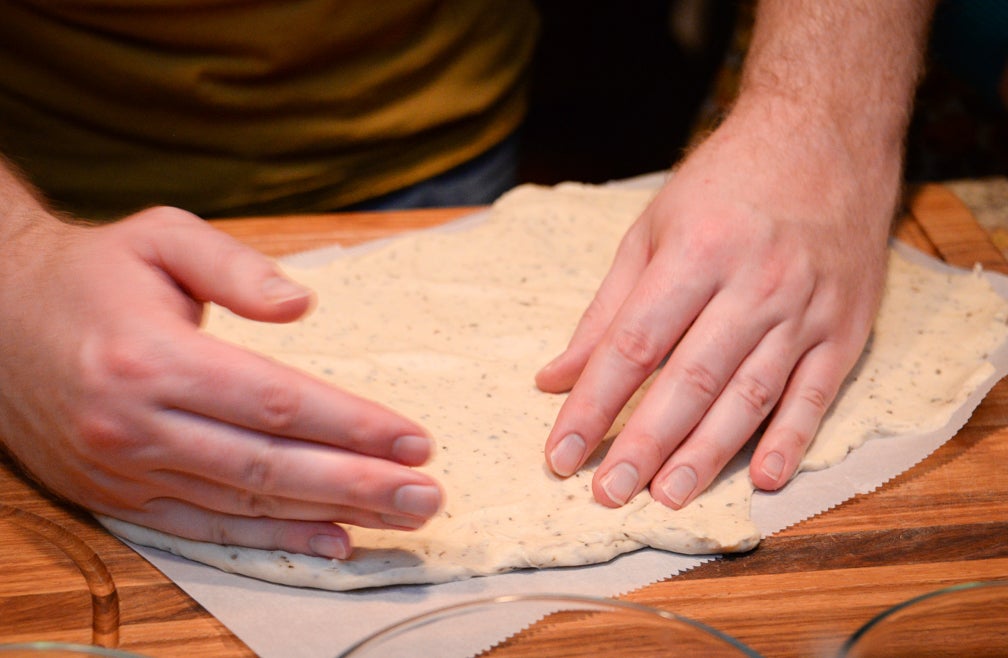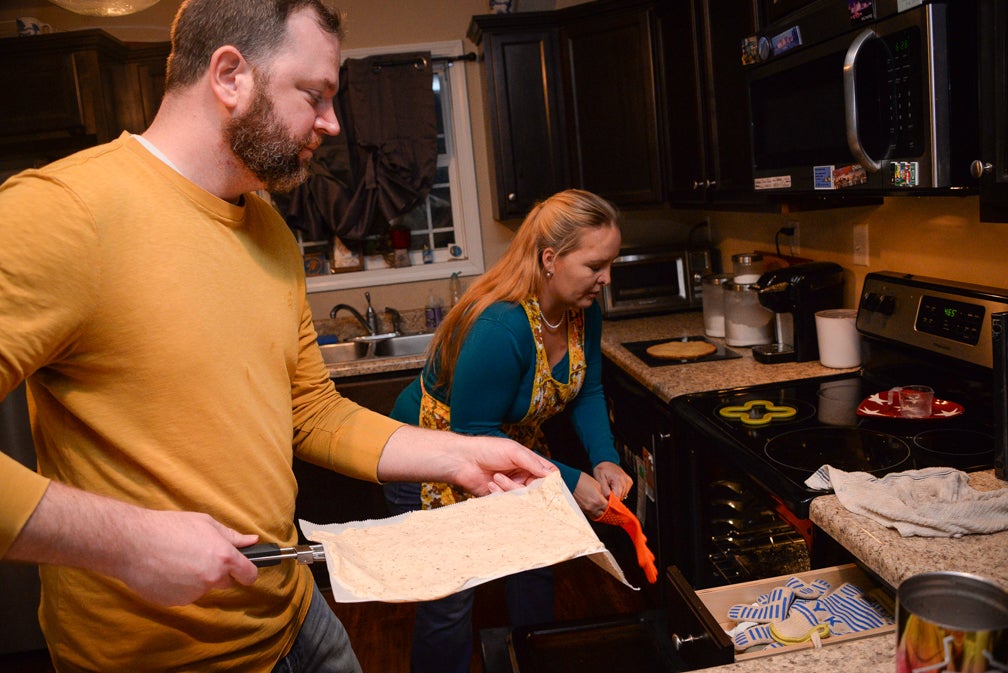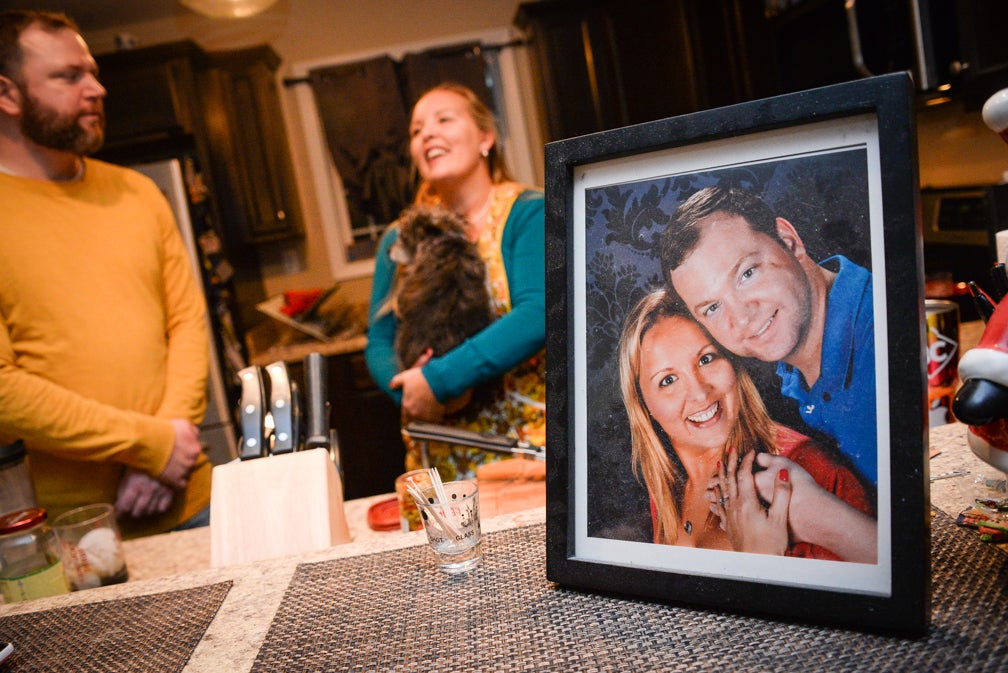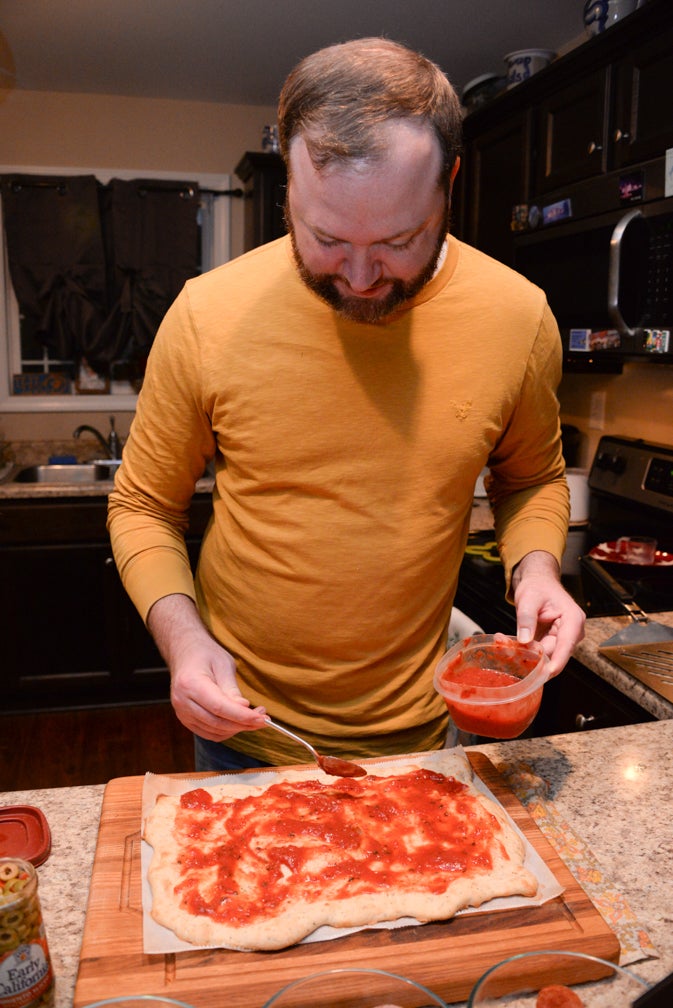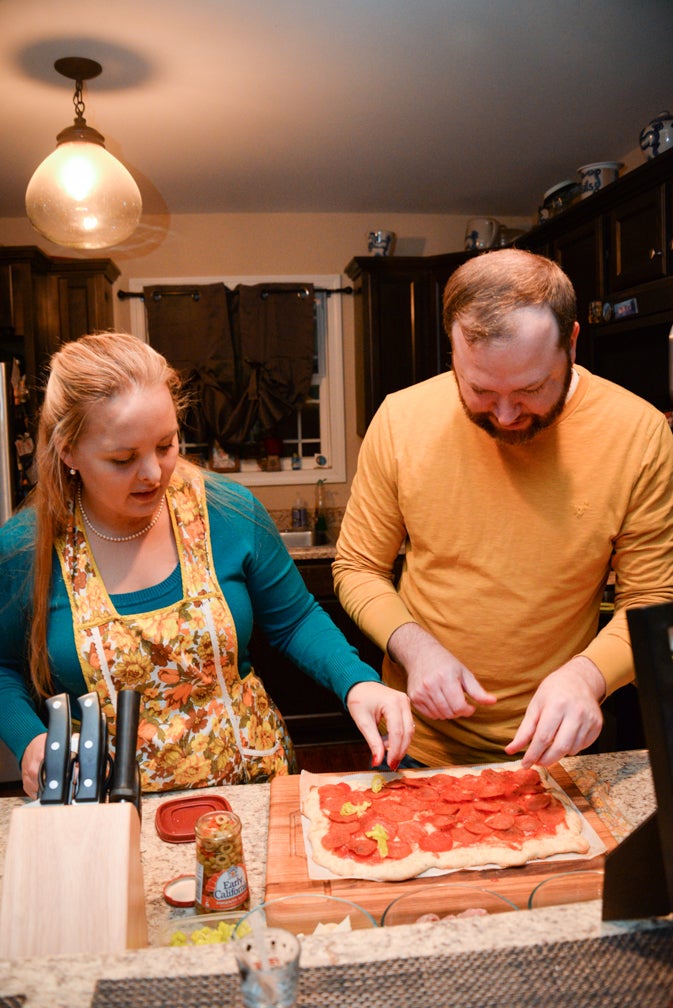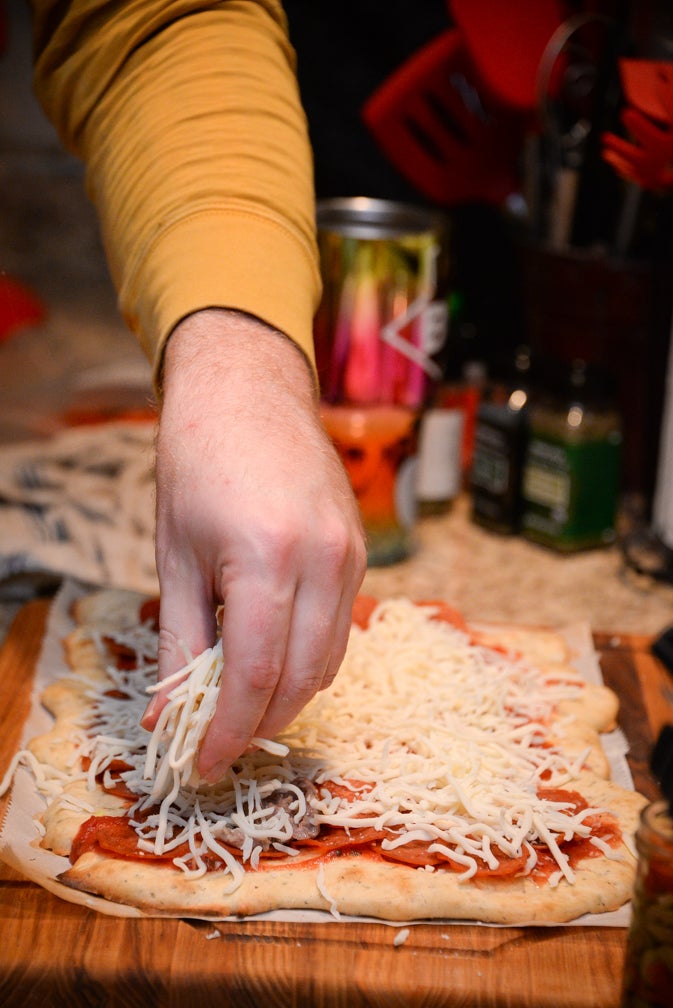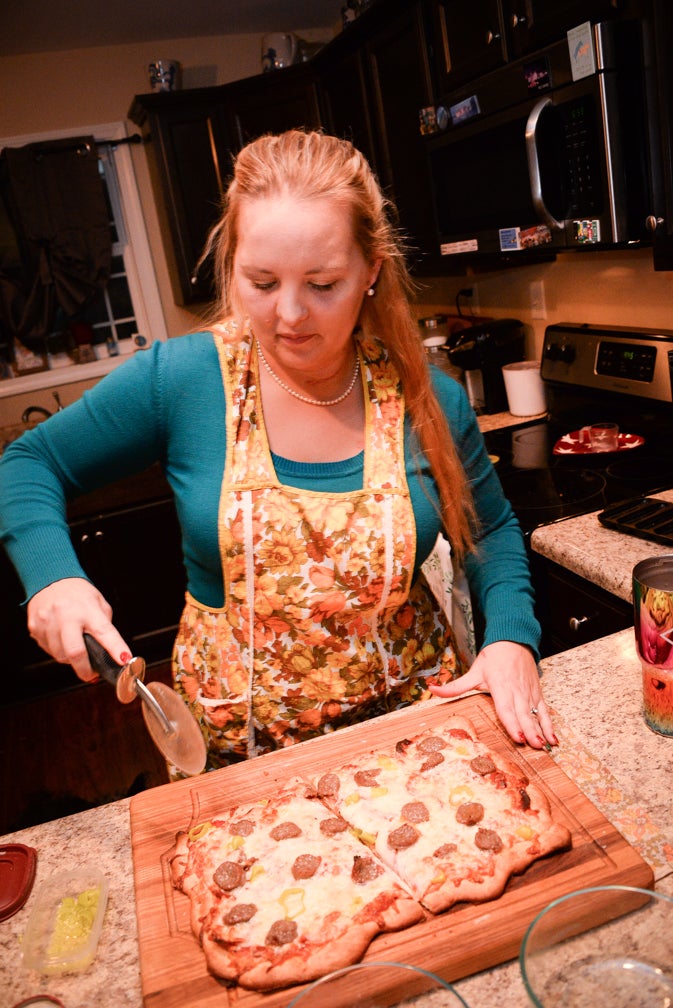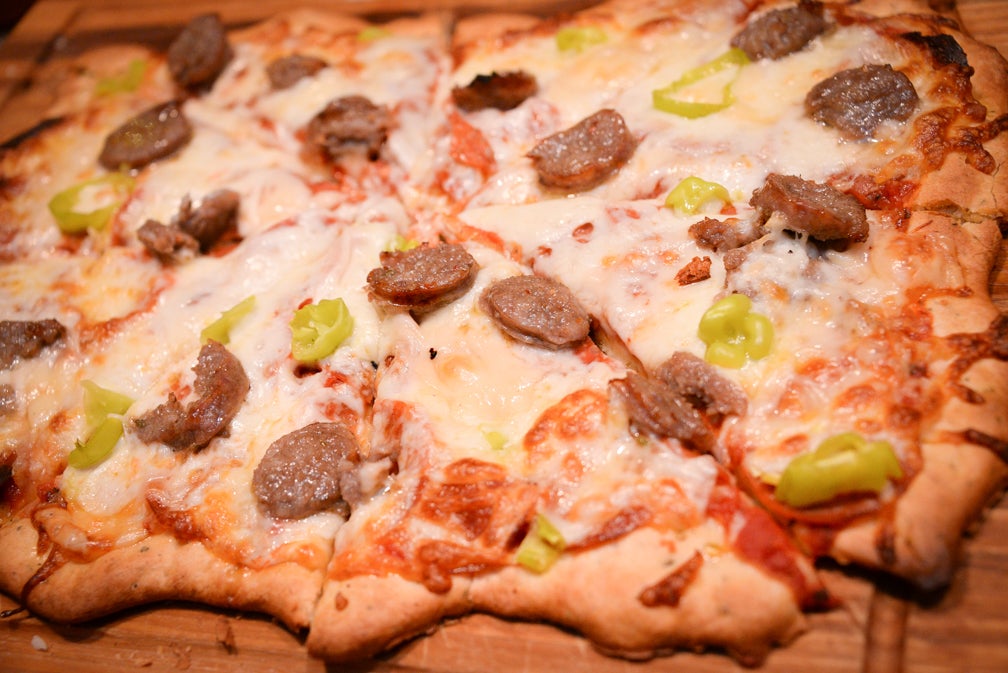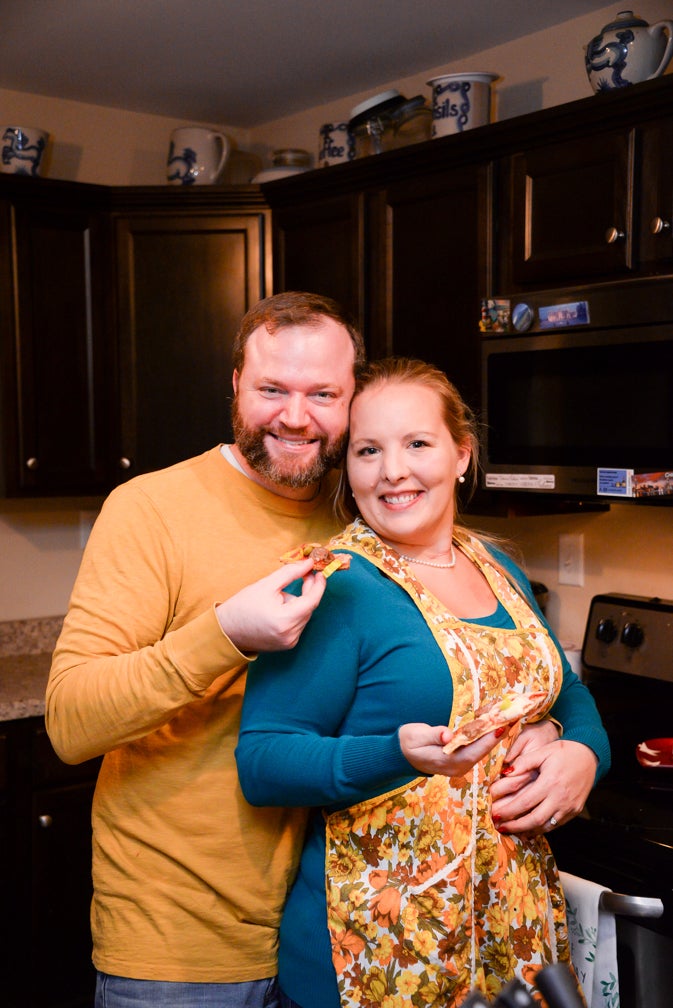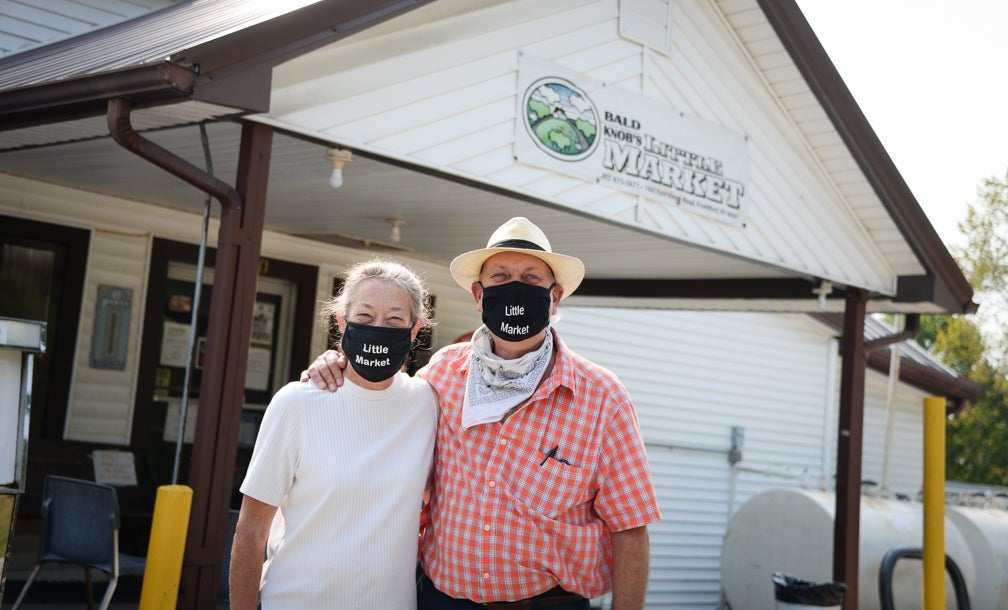For Sabrina James and her husband Grant, cooking is more than just a way to make dinner. It’s a way for them to make their relationship better.
Through classes, trial and error, and just spending time cooking with each other at home, the couple has worked through problems, and discovered their love for one another in kitchens.
“My favorite memory is that when we first met, we were in his kitchen cooking pizza for dinner,” Sabrina said. “That’s the first time he said he loved me. Ever since then, I’ve loved him too.
According to a 2016 Light Speed GMI survey of 1,000 Americans, sponsored by Calphalon, nearly 90 percent of Americans believe that cooking together is one of the best ways to strengthen a relationship, or to keep it strong.
The key, the survey says, is the amount of communicating couples have to do when cooking together. Almost all the survey respondents — 98 percent of them, in fact — feel communication is key element in a happy relationship. The feeling ran true regardless of where in their relationships the survey respondents were — 88 percent of those in serious relationships, 94 percent of those who were engaged and 84 percent of those who were married agreed that cooking brings couples together via communication.
The survey also found that many people believe that cooking for your partner shows them that you love them. A whopping 92 percent of survey respondents said home cooked meals help partners connect, and 78 percent said that couples who cook together tend to stay together.
Sabrina, an independent business owner, and Grant, an inspector for the Kentucky Occupational Safety and Health Administration, have very different ways of looking at things, but in the kitchen they find ways to come together and make their differences work. Sabrina says she’s more the “throw things together” type, while Grant says he’s more “by the book.” When they cook together, they work through their varied cooking styles by giving each other the space and respect.
“He’s more grounded and I’m more ‘Let’s see what we can do with this’,” Sabrina said. “His way of being very methodical counters my way of being up in the air.”
Cooking together, with such different styles, can lead to disagreements, she said, but being together in the kitchen helps them communicate better.
“Sometimes we may fight about the way it got made … I may let it stay in the oven a little bit longer, or the noodles may not stay in the pot long enough — and it’s more al dente, than Grant likes,” she said. “But, I feel like when we cook together, it’s our way of communicating. When we’re struggling, I say ‘let’s make brownies.’ If something is wrong or doesn’t feel right, we get into the kitchen and make something together.”
And cooking helps them to celebrate each other’s history.
Grant said he learned to cook from his grandfather.
“That was our thing, we did rolls and loaves of bread,” he said. “That was kind of our scientific method. Cooking can be abstract, but baking has a formula that you have to follow. Sometimes you have to vary it depending on circumstances, but it’s much more exact.”
Sabrina learned to cook during college when she had a job as a nanny to seven foster children. She learned how to make food in large quantities, she said.
“I would wake up in the morning, and I never knew how many kids they were going to have,” she said. “Sometimes there was two sets of grandparents in the house and the parents … there could be kids over for a sleep-over. I would wake up on Saturday mornings and there could be 25 people in the house and they all have to eat. It’s a very different cooking style. He woke up every Saturday morning making bran muffins with his grandfather. I had to pull together what I could from meats we had in the freezer to eggs and pancakes to feed a crowd.”
To celebrate their relationship and love of food, the two have taken couples cooking classes at Wild Thyme in Lexington. The classes vary from simple knife skills classes to classes on making your own pasta, or creating a gourmet meal together.
They’re a good way, Grant said, to see what the relationship will be like.
“You can have a trial run to see how you work together,” he said. “It’s a way to see who takes the lead, who follows the rules…”
There are times, he said, when things will start to go wrong while they’re cooking — such as the meat that isn’t browned the right way, or things that aren’t put into a dish in the right order according to a recipe. But, cooking together has helped them learn how to deal with those errors, and how to deal with things that pop up outside of the kitchen as well, Sabrina said.
“It really has helped us to bring perspective to things,” she said. “I think it has really brought us closer together.”
Garlic-Herb Pizza Dough recipe
Makes enough for two large, four mediums or eight individual pizzas. Recipe appeared in Cook’s Illustrated
Ingredients:
1/2 cup warm water
1 envelope (2 1/4 teaspoons) active dry yeast
1 1/4 cups water at room temperature
2 tablespoons extra-virgin olive oil
4 cups bread flour, plus extra for dusting hands and work surfaces
1 1/2 teaspoons salt
4 medium minced garlic cloves
1 teaspoon minced fresh thyme, oregano or rosemary leaves
Directions:
Heat 2 tablespoons extra-virgin olive oil in a small skillet. Add 4 medium minced garlic cloves and 1 teaspoon minced fresh thyme, oregano or rosemary leaves. Sauté until garlic is golden, 2 or 3 minutes. Cool mixture and set aside.
Measure warm water into 2-cup measuring cup. Sprinkle in yeast; let stand until yeast dissolves and swells, about 5 minutes. Add room-temperature water and oil mixture, stir to combine.
Pulse flour and salt in workbowl of large food processor fitted with steel blade to combine. Continue pulsing while pouring liquid ingredients (holding back a few tablespoons) through feed tube. If dough does not readily form into a ball, add remaining liquid, and continue to pulse until ball forms. Process until dough is smooth and elastic, about 30 seconds longer.
Dough will be a bit tacky, so use a rubber spatula to turn out dough onto lightly floured work surface; knead by hand with a few strokes to form smooth, round ball. Put dough into deep oiled bowl and cover with plastic wrap. Let rise until doubled in size, about 2 hours. Punch dough down with your fist and turn out onto lightly floured work surface. Divide and shape as directed in master recipe for thin-crust or grilled pizza.
Crushed tomato pizza sauce
Makes enough for 4 to 8 pizzas
Ingredients:
1 28-ounce can crushed, ground or whole tomatoes
1/4 teaspoon coarsely ground black pepper
1 teaspoon dried basil, or 2 tablespoons minced fresh basil
1/4 teaspoon dried oregano, or 1 teaspoon chopped fresh oregano
1 teaspoon granulated garlic, or 2 large garlic cloves, finely minced, plus more as needed
1 tablespoon red wine vinegar or freshly squeezed lemon juice, or a combination, plus more as needed
1/2 to 1 teaspoon kosher salt
Directions:
In a large bowl, stir together the tomatoes, pepper, basil, oregano, garlic, vinegar or lemon juice, and 1/2 teaspoon of the salt, adding the salt gradually and tasting as you go.
Add more vinegar or lemon juice and salt, if needed. But be careful; the flavors of the herbs, garlic and salt will intensify when the pizza is baked, so resist the urge to increase the amount. You can always add more herbs and salt on top of the pizza after it comes out of the oven.
Transfer to a covered container, seal tightly, and refrigerate up to 10 days or freeze up to 3 months.

